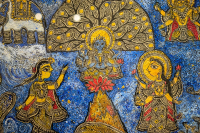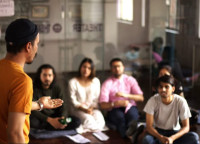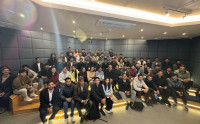Culture & Lifestyle
The enduring legacy of Sister Max
How an African-American school teacher came to Nepal in the 1960s, established a private art gallery and helped found the Kopan Monastery.
Sangeeta Thapa
I first heard about Sister Max and her gallery from the late artist Uttam Nepali. At that time, Shashikala Tiwari and I had just opened the Siddhartha Art Gallery in Pratap Bhawan in 1987. From Nepali, I learnt that Max had set up a gallery some years ago next to the German Embassy (now the Surya Nepal Office) in Kantipath, which was just an arm’s distance from where we were located. I found that information very reassuring, as there is nothing more important than location when starting a business. At that time, Kantipath was the destination for artists—Palpasa Gallery and the British Council were on the same street, while the Sirjana Art Gallery, J Art Gallery and Lalitkala Campus were around the corner. The gallery’s proximity to Durbar Marg and Thamel was advantageous as this was where all the hotels, travel agents, restaurants and shops were located.
Through Nepali, I learnt that Sister Max later took on Buddhist robes, closed the gallery, moved to India, and sometimes visited Kathmandu. Though Nepali promised to connect us and told me that Sister Max knew about me and the work I was doing, we never met, and Sister Max remained an enigma. While writing about Nepali art and the role played by galleries in promoting the arts, it is important to acknowledge the role that Sister Max played, too.
A meeting with my friend, the American artist Shelley Warren, in the fall of last year suddenly opened doors when she mentioned that Sister Max had been instrumental in setting up Kopan Monastery. My first visit to Kopan was for the enthronement of the young Spanish boy Lama Osel, who was believed to be the reincarnation of Lama Yeshe, the founder of Kopan Monastery. Shelley and her husband Jim came to Kopan for spiritual retreats.
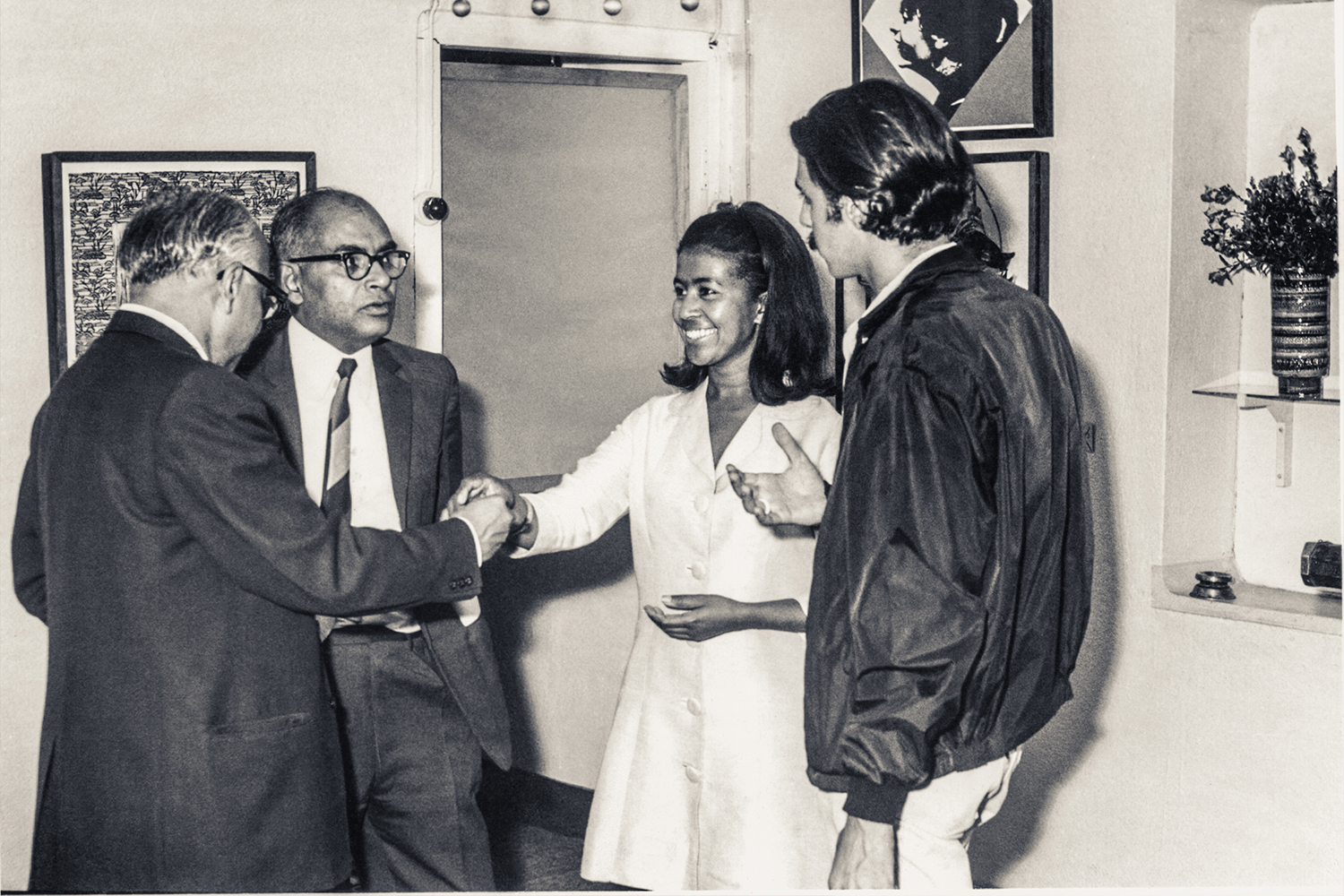
While I was amazed to learn that Sister Max had helped establish Kopan Monastery, Shelley was just as astounded to hear that Sister Max once ran a gallery in Kathmandu. Before she left for America, she promised that she would meet with Sister Max in New Mexico and ask her about the gallery. True to her word, Shelley sent me articles and photographs and recorded her conversations with Sister Max, who was now an octogenarian and in frail health. In the photographs, I saw images of gallery openings—one stood out, as the celebrated Indian artist, the late MF Hussain, was in it. I was convinced the images were from Max’s time in India. I believe that if MF Hussain had come to Nepal at any point, I would have learnt about it! I later learnt from the eminent Nepali artists Shashi Bikram Shah and Krishna Manandhar that they had indeed attended an exhibition of MF Hussain’s exhibition at Max’s gallery. Shashi Bikram Shah also recalled that the gallery was ‘housed in the residence of Sri Jung Shah’ and that he had met with Max at the home of eminent Nepali artist Manuj Babu Mishra. However, Manuj Babu’s son, the artist Roshan Mishra, was unable to pull up any documents from his father’s archive. However, through Peter Kedge, a longtime associate of Sister Max, I learnt that Max had funded his sister Manju’s education at Lincoln School. Manju later gained a PhD in communications in Moscow, moved back to Kathmandu, and opened a communications college.
Over Christmas, I met Frances Howland and James Giambrone, longtime expatriate residents of Kathmandu, who knew Sister Max for her contribution to Kopan Monastery but not about the gallery. Shelley also introduced me to Judith Weitzner, who had journeyed to Nepal in the 1960s and knew Sister Max well. I finally had my lead.
MainPhoto.png)
Sister Max, born Max Mathews in Virginia, USA, was an African American with a Master’s degree from Columbia University. Her qualifications stand out, especially as the 1950s were still a difficult time for people of colour in America. Leaving this suffocating atmosphere of racial divides, Max may have sought liberation through travel. According to Kedge, she was employed by the US Department of Defence, which at that time, oversaw the US International Schools network hence the postings to Athens, Berlin, Moscow, then Kathmandu. While teaching at the American International Schools in these countries, she gravitated towards artists and poets. In 1965, Max taught at the American International Lincoln School in Kathmandu. Judith, who was also a teacher there, remembers that their classrooms were next to each other and that Max was a “creative and engaging teacher” who looked stylish even in a simple Punjabi kurta she wore to work.
Judith remembers that Max set up her residence above the gallery before moving to the heart of the busy Ason Tole bazaar. It was a four-storied house which Max playfully referred to as her “penthouse”. The second and third floors served as her apartment, and the terrace had an unrivalled view of Kathmandu. Judith remembers that the Ason penthouse was filled with artworks from her travels—rugs, Jewish Russian paintings, thangkas and paintings, and Indian furniture. Kedge shared that while Max was in Moscow “she somehow became involved in the plight of persecuted Jews, many of whom were in prison but creating art. Max bought a lot of their art, and a container load of Jewish art followed Max to Kathmandu.” She also purchased many Tibetan thangkas and statues from refugees who had fled Tibet and were selling these artefacts to support themselves. In an interview for the Lama Yeshe Archive, Sister Max shares that she “paid what the refugees asked for and gave them what they needed”.

From both her apartment and gallery, Max held her ‘salon’, dressed in fine brocade and Tibetan attire, entertained personalities like King Mahendra, also a poet and a patron of the arts, the Prince of Cambodia, old friends from her many travels, new friends she made in Kathmandu like the dashing Swiss pilot Hardy Fuerer and Kedge who also took up the dharma. Judith recounted when Max bought a 1932 Hudson convertible limousine from her contact in the Royal Palace to get around Kathmandu, which hardly had any paved roads at that time.
The first art gallery, Kathmandu Kalamandir, was set up by the late Narrotam Das Shrestha in 1941 in Kalimati. However, the 40s proved to be premature for an arts scene, and the gallery closed after a year. In the late 50s and early 60s, art exhibitions were held at the USIS building on New Road, in the Indian Library opposite Tundikhel, and in Saraswati Sadan opposite Tri Chandra Campus. Nepal Arts Council was established only in 1962, and the Nepal Association of Fine Arts (now Nepal Academy of Fine Arts) was set up at the behest of King Mahendra in 1965.
Max decided to set up her salon/gallery—she had a vast collection of Jewish Russian artwork that she needed to sell. However, as she was used to keeping company with artists, writers and poets, it was but natural that her gallery transitioned to becoming an alternative private space for Nepali artists to exhibit their works.
Max Gallery was housed in a two-storey building at Kantipath across the American Embassy Consulate office. It also had a café where events and book readings were held. Visitors to the gallery included her friends, artists and poets, local luminaries of the time, members of the small expatriate community, scholars and anthropologists who had come to Nepal to conduct their field study. Many of these scholars stayed at the Panorama Hotel in New Road, where the rooms were cheap and the owner, whom everyone referred to as ‘Dad’ helped change dollars on the black market. Max had also befriended the ‘Dooley Girls’ or ‘Dooley Dollies’, who were young stewardesses who came to Nepal on a training programme through Pan American Airlines that flew to Calcutta, India, at this time. These young women were visitors to the gallery, too. Judith remembers that while Max taught at school, her gallery was run by her assistant ‘Tiger’, a person of short stature who had a good command of English.

Andrea del Rubia’s thesis paper ‘Modern Art of Nepal (1850-1990). Picturing a Nation, Performing an Identity’, documents that in 1969, Max exhibited the works of Uttam Nepali, Gehendra Man Amatya, contemporary Russian paintings, local children’s art exhibition, Frenchart reproductions, Indian batiks, Kenyan artist Anthony Marciano, Dil Bahadur Chitrakar and Deepak Shimkhada. Rubia’s paper does not mention MF Hussain’s exhibition and that Gehendra Man Amatya had three solo shows at the gallery. Gehendra Man Amatya shared that Max had also organised an exhibition of his works in Chicago, USA. At this time, theartist Madan Chitrakar had also returned from the Sir JJ School of Art, Mumbai and designed some of the graphics for Max.

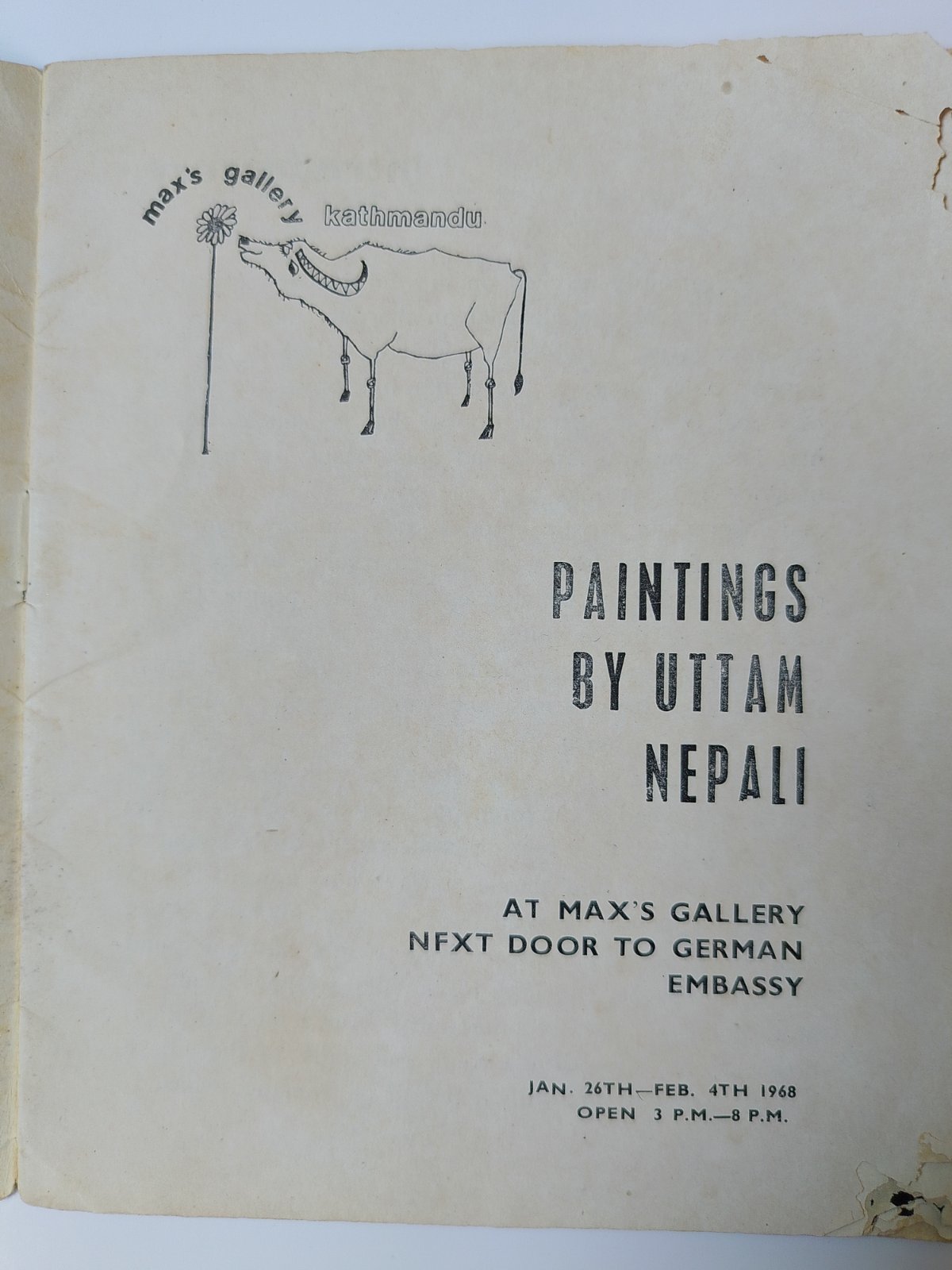
In my correspondence with Kedge, I learnt that Max “brought artists, art, speakers and musicians from India” to Nepal. Eventually, Max decided to focus solely on Nepali artists. King Mahendra, pleased with Max’s interest in promoting Nepali art, inaugurated some of her exhibitions.
Following Andrea’s lead, I called the artist Deepak Simkhada in Claremont, California, who shared that Max’s gallery was a pioneering initiative. A year later, two other private galleries were to open: the Prithivi Gallery, established by Hemadri Rana and Uttam Nepali in Lal Durbar (now the Yak and Yeti Hotel in Durbar Marg), and the Arniko Gallery, established by Hanuman Das in Maitidevi. Shimkhada, a student at the Baroda School of Arts at that time, remembers being drawn to Max’s great collection of music—the records of Duke Ellington, Nat King Cole and Jimmy Smith and credits his love for jazz to Max’s gallery.
In 1968, Max revisited Greece, connected with old friends and met Marty Widener, a fellow American who made an overland trip to Nepal in a Volkswagon to woo her. The duo were married in a grand ceremony by Lama Zopa and Lama Yeshe in the palatial Rana house in Tinchuli, Boudha, that Max and Marty had rented.
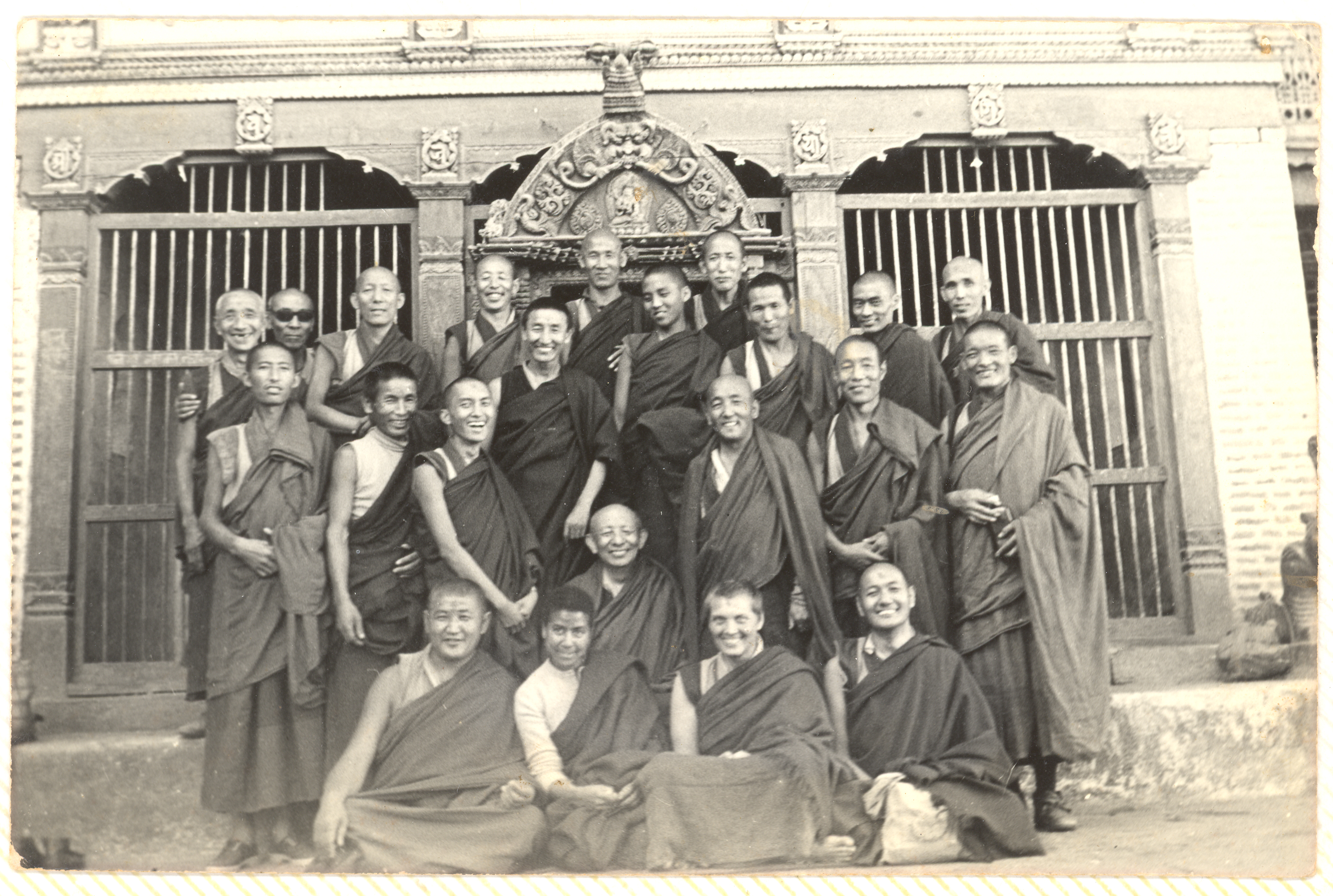
In November of the same year, Max’s old friends from her days in Mykonos, Greece—Zina Rachevsky, former Hollywood actress, wealthy socialite and friend of the poet Alan Ginsberg, Ira Cohen, Petra Voigt and Timothy Leary—visited Max’s gallery with two Tibetan Buddhist monks: Lama Thubten Yeshe and Lama Zopa Rinpoche.
In an interview documented on the Lama Yeshe Archive—Max recounts that it was Thanksgiving Day, and there was a party in the gallery when Zina walked in with Lama Yeshe and Lama Zopa Rinpoche. Though Zyna had run a rival salon in Greece, they had remained friends. According to the Kopan Monastery website, Lama Zopa Rinpoche and Lama Yeshe met in the Indian refugee camp in Buxa Duar after fleeing Tibet in 1959. Zina had now embraced Tibetan Buddhism and was one of the first foreigners or foreign women to study with Tibetan lamas after Alexander David Neal. Zina had met the monks in India and had decided that they now needed to set up a Buddhist Center in Kathmandu. The Dalai Lama had instructed Lama Zopa and Lama Yeshe to spread the Dharma beyond India and reach out to the Western world.
At the dinner, Zina requested Max to help the monks. The day after Thanksgiving, Max visited the Lamas in a Gelugpa Monastery in Bauddha, and in this meeting, she had a profound epiphany where she realised that she may have been sent on her journey to Nepal due to her past life association with Buddhism. Soon afterwards, Max separated from her husband as the call to Buddhism was strong. Judith remembers the time Max shaved her long hair, took on robes and was ordained a Buddhist nun
Zina wanted to set up an artist’s village with artist’s residency programmes and a meditation centre where Lamas would also teach. Bryan Whyte, another longtime resident of Nepal, shared that Zina and the monks lived in a cottage that the American embassy used to rent Kopan due to its view of the Valley. After some time, the house was purchased with additional land from the Royal astrologer/preceptor to set up what is today Kopan Monastery. To help Lama Yeshe and Lama Zopa set up their Monastery in Kopan, Sister Max donated the proceeds from the sale of artworks for the construction of Kopan Monastery and the purchase of surrounding land. She invited the monks to take the Tibetan statues and thangkas she collected for the Monastery. Her salary from Lincoln School was also donated to set up the Monastery. She was the sole benefactor of the Kopan Monastery project at this difficult time.
Later, on the advice of Lama Yeshe and Lama Zopa, Max gave up teaching at Lincoln School, closed the gallery, moved to Ason Tole, and then to Kopan to help with the tasks at hand. As Max was responsible for the welfare and education of 20 young monks and several lamas at the beginning of Kopan Monastery, she became known as ‘Mummy Max’ for her maternal role.
She worked hard at developing business strategies to raise funds for Kopan Monastery: food and shelter for the monks, clothing, health needs, teachers, and school supplies. The children’s artworks were sold in Berkley, California, to raise money to support the school and the monks. Even Max’s Hudson convertible was sold to raise funds for the Monastery.
To raise funds for the Monastery, Max moved to India in the 80s. In India, she transformed antique Indian saris into high-end fashion and then forayed into tailoring and designing beaded and sequined gowns in India, which were sold in Milan, Paris and New York. Her international success with her fashion line and her immersion in Buddhism earned her the moniker ‘Sister Max.’ Her vision, mission, and designs made it to Newsweek Magazine with the heading ‘Sister Max’s Divine Designs’ in the September 12, 1983 issue.
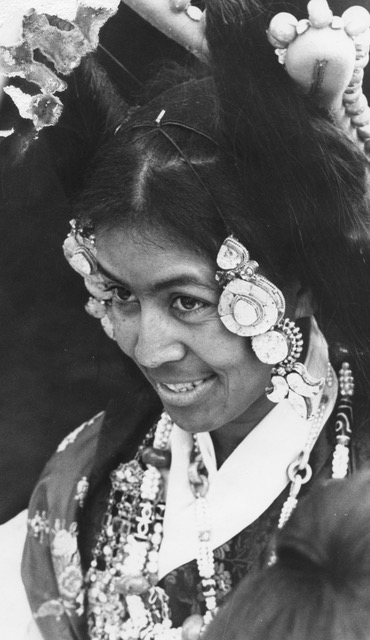
Jan Willis, in an article titled ‘Sister Max working for Others—Engaged Buddhism’ in 1996, documents Sister Max’s journey in uplifting the lives of others and makes reference to the Newsweek article, “Thirteen years ago, an American woman named Max journeyed to Nepal, was ordained a Tibetan Buddhist nun and renounced the material life. Then her karma became truly curious: Sister Max became a high-fashion designer. The ascetic woman of the East now dresses some of the West's wealthiest and most glamorous women. Her shimmering sequined, jagged-hemmed sheaths, delicate pastel gowns with beaded flowers and electric-hued silk jackets are among this season’s most resplendent evening wear. Willis then goes on to write, “It was a miracle—one blessed by Lama Yeshe and Lama Zopa, but engineered by the inventiveness and vision of Sister Max. I remember being thrilled that year when, on the evening of the Academy Awards, female celebrities entering that hall of glitter and glamour responded to reporters’ queries about the gowns they were sporting: “This is a ‘Sister Max’!”
After the fashion business waned, Sister sold Indian antique furniture in Boulder, Colorado, to support Kopan Monastery. In India, Max’s journey of compassion and kindness unfolded after she met Kiran Bedi, the inspector general of Tihar jail at that time. Through her connection to Bedi, Sister Max was able to work for the upliftment of the women inmates in Tihar jail. Her work with the inmates and her work for Kopan Monastery gave her a spot on the Oprah Winfrey Show. However, this chapter of Sister Max’s work for the inmates warrants another article. She credits her life’s journey to Lama Yeshe and Lama Zopa Rinpoche, with a humble declaration that the Lamas “gave me a reason to be.”
In the midst of writing this article, Judith reached out to me on February 12 to let me know that Sister Max was dying. Five days later, Shelley sent me a message that said Sister Max had passed away peacefully in Santa Fe “surrounded by compassionate, caring students of Lama Yeshe and Laza Zopa Rinpoche.” I was saddened to hear this news. As a fellow gallerist, my quest to research and document Sister Max’s contribution to the arts led me to discover intriguing facets of Sister Max’s life—her compassion, selflessness, her unwavering support and contribution to the founding of Kopan Monastery.
Though Max’s gallery ran for four years, there is no doubt that Max Gallery played an important role as a pioneering art space that inspired other artists and individuals to open their own art galleries in Kathmandu.




 5.3200000000001°C Kathmandu
5.3200000000001°C Kathmandu



